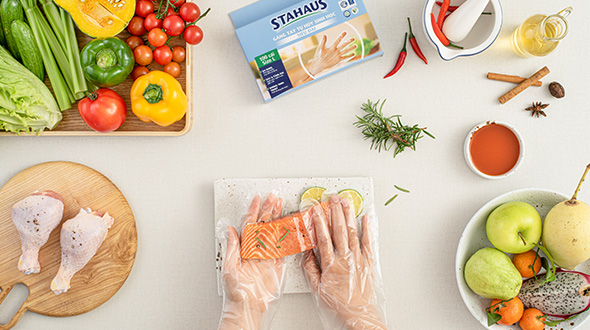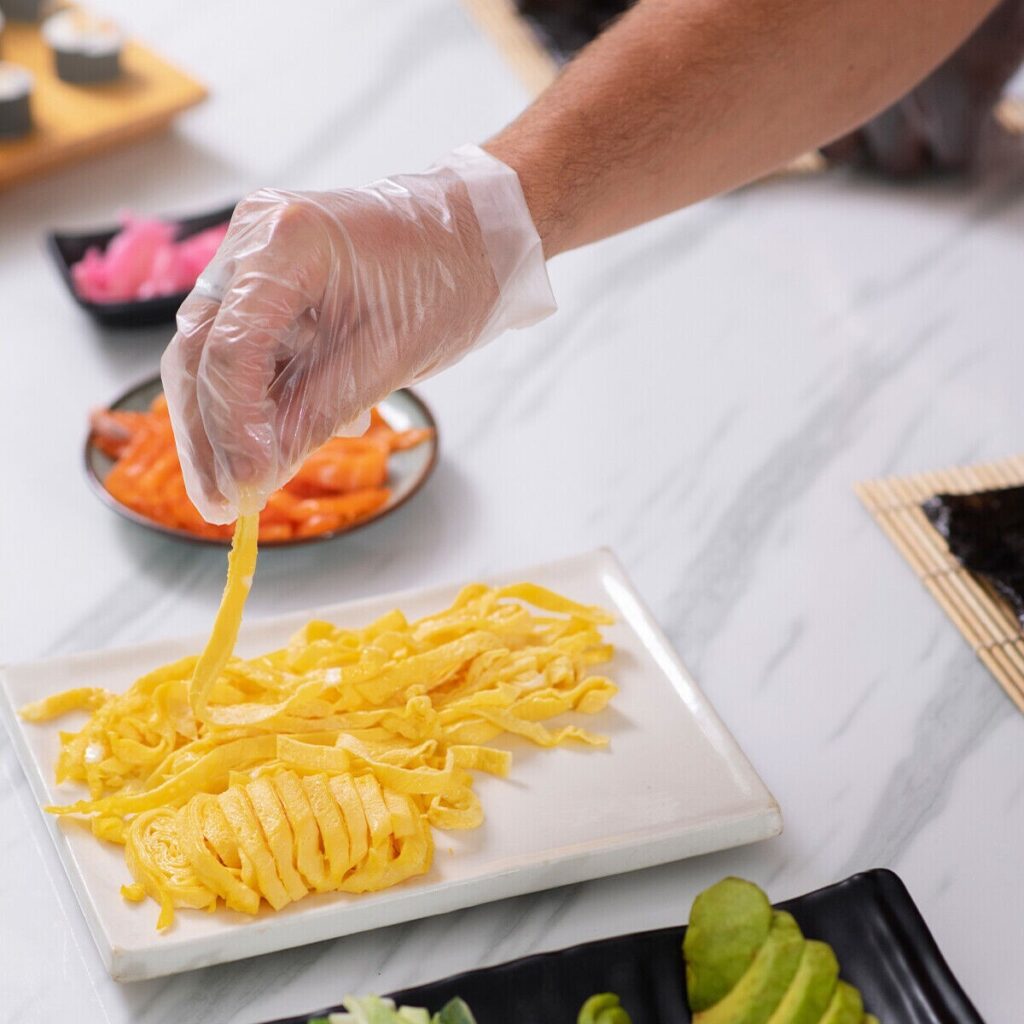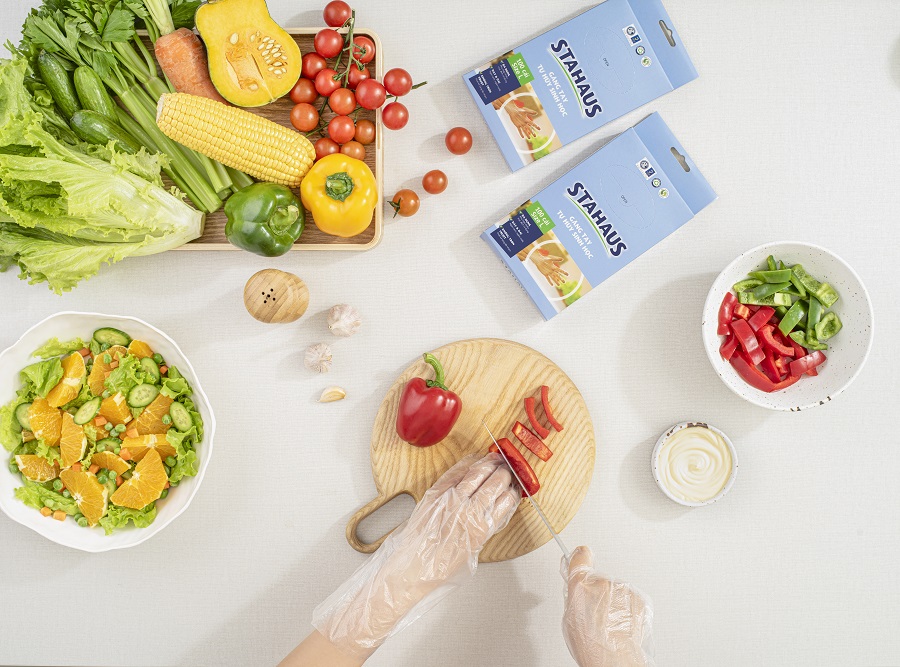HDPE, CPE, or TPE gloves – which type of disposable glove is best suited for your needs? In industries where hygiene, protection, and cost-efficiency matter, understanding the differences between these three polyethylene-based gloves is essential. Each type offers unique characteristics in terms of durability, comfort, texture, and price. In this article, we’ll break down the key differences between HDPE (High-Density Polyethylene), CPE (Cast Polyethylene), and TPE (Thermoplastic Elastomer) gloves to help you make an informed decision for food handling, cleaning, or light industrial use.
1. HDPE Gloves (High-Density Polyethylene)
HDPE gloves are made from high-density polyethylene, a thin and lightweight plastic material.

- Picture 1. HDPE gloves
Key features:
– High durability
– Good tensile strength
– Water resistance
– Mild chemical resistance
– Basic tear protection
– Low cost
2. CPE Gloves (Cast Polyethylene)

- Picture 2. CPE gloves
CPE gloves are more durable than HDPE gloves. Made from cast polyethylene, they often have a textured or embossed surface for improved grip. They provide better protection and are frequently used in food processing, cleaning, jobs involving light chemicals
Key features:
– Better durability and chemical resistance than HDPE gloves
– Good elasticity, flexibility, and impermeability
– Waterproof and oil-resistant
– Often textured surface
3. TPE Gloves (Thermoplastic Elastomer)

- Picture 3. TPE gloves
TPE gloves are manufactured from thermoplastic elastomer, a material that combines the properties of plastic and rubber. TPE gloves offer a more flexible and comfortable fit. It is an alternative to latex gloves that reduces the risk of allergies and is more recyclable than some other plastics.
Key features:
– Softness
– Good elasticity providing a comfortable fit for extended wear
– Good puncture resistance,
– Resistance to oils and some chemicals.
4. When to use each type of glove

HDPE gloves are ideal when you need quick hand coverage for very light tasks. They’re commonly used in food handling and cleaning
CPE gloves offer a stronger, more reliable option than HDPE. They’re a better fit for tasks that involve:
– Food preparation
– General cleaning duties in restaurants or hotels
– Beauty services and jobs involving light chemicals
TPE gloves bridge the gap between polyethylene gloves and more expensive vinyl or nitrile options. Use them when:
– Comfort and tactile sensitivity are needed
– Tasks require flexibility or repeated hand movement
– You work in spas, salons, caregiving, or personal hygiene sectors
– TPE gloves offer a latex-free, stretchable alternative that’s suitable for longer or more detailed tasks.
5. Looking for high-quality, reliable HDPE, CPE, TPE gloves for your household or business?

Stavian Packaging proudly offers high-quality HDPE, CPE,TPE gloves that meet strict safety standards and are user-friendly. With three high-capacity manufacturing plants equipped with modern machinery that meet export standards for the most demanding markets in the world, such as Europe and Japan, Stavian Packaging ensures consistent supply and flexible services, including custom sizing, design, brand/logo printing, and tailored packaging solutions.
Our commitments to partners:
– Competitive pricing
– Premium product quality
– On-time delivery
– Transparent, long-term cooperation policies
– Global expansion & custom manufacturing services
Explore more disposable gloves here: https://stavianpackaging.com/products/gloves/